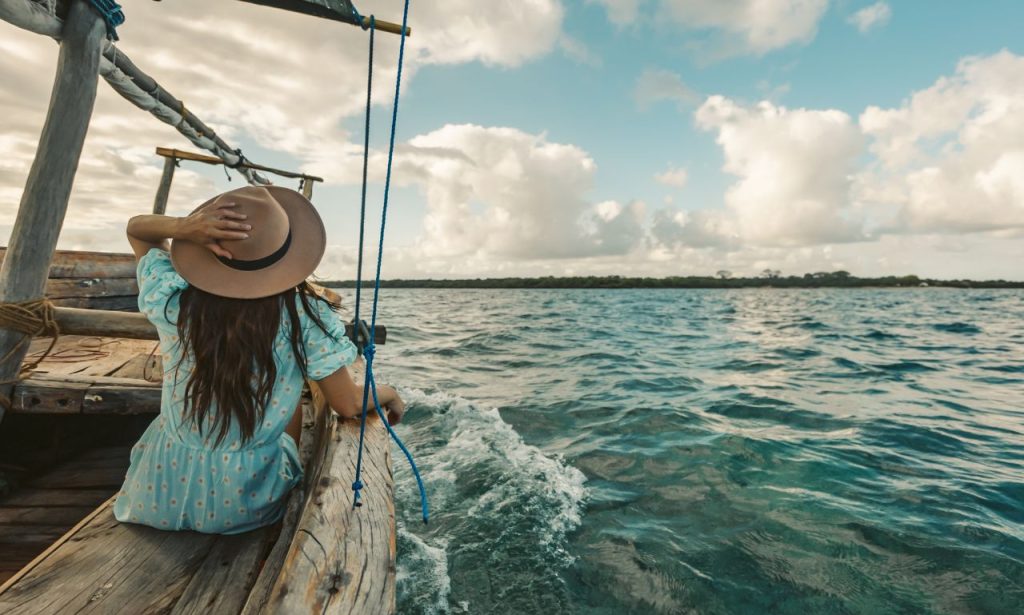Learning to sail is an exhilarating journey that melds the serenity of the open waters with the thrill of mastering an age-old craft. But one common question among aspiring sailors is, “how long does it take to learn how to sail?” The answer is multifaceted, influenced by various factors ranging from your dedication to the type of sailing you wish to pursue. This comprehensive guide delves into every aspect of learning to sail, providing you with insights that go beyond conventional articles to ensure you have the most enriching sailing experience.
How Long Does It Take to Learn the Basics of Sailing?
Learning the basics of sailing can take anywhere from a few days to several weeks, depending on the factors mentioned earlier. A structured sailing course typically provides a solid foundation within a few weeks, while self-learners might take longer to reach the same level of proficiency.
Factors That Can Affect the Speed of Learning to Sail

Personal Commitment and Time Investment
Your dedication plays a critical role. The more time you invest in learning and practicing, the quicker you will progress. Weekend sailors who practice sporadically will naturally take longer than those who dedicate several days a week to honing their skills.
Previous Experience and Background
Having a background in water sports or activities like windsurfing, kayaking, or even operating powerboats can provide a beneficial foundation. Familiarity with water dynamics and basic nautical terminology can shorten your learning curve.
Learning Environment
The conditions under which you learn can significantly impact your progress. Favorable weather, accessible sailing locations, and supportive learning communities all contribute to a faster learning experience.
Quality of Instruction
Professional instruction from a certified sailing school can accelerate your learning process by providing structured lessons and immediate feedback. Conversely, self-learning can be more challenging and time-consuming without the guidance of an experienced mentor.
Learning Through a School Versus Self-Learning
Advantages of Learning Through a Sailing School
Enrolling in a sailing school offers structured programs that cover fundamental skills, safety procedures, and advanced techniques. Certified instructors provide hands-on experience and personalized feedback, which can drastically reduce the time it takes to become proficient.
Self-Learning: A Flexible but Challenging Path
Self-learning offers flexibility and the opportunity to learn at your own pace. However, it requires a high degree of self-motivation, resourcefulness, and the ability to troubleshoot problems independently. Access to quality learning materials and online resources is crucial for self-learners.
Selecting the Right Boat for Your Skill Level
Dinghy Sailing
Simple boats for simple beginnings! Dinghies are small and lightweight—ideal for beginners to get a taste of the thrill of the open water. They’re easy to control, responsive, and best for short day sails. It’s a comfortable sailing experience to gain hands-on practical experience with wind and sail trim.
Keelboats
Once you’ve mastered the basics, hop onto a keelboat. These boats are more stable and forgiving—great for someone wanting to sail in coastal waters. They’re larger boats, but the keel provides balance and makes them less likely to capsize compared to dinghies.
Catamarans
Think speed and stability. Catamarans are fast, thrilling, and perfect for someone who wants an adventure sailing experience. They’re also a solid option for learning in conditions that require more advanced knowledge and maneuvering.
Considering the Type of Water You’ll Be Sailing In
Inland Lakes and Rivers
Inland lakes are beginner-friendly. They’re more predictable—meaning you won’t have to deal with tides or tricky currents. The environment is controlled, which allows you to learn without being overwhelmed by harsh weather conditions.
Coastal Waters
Want to take it up a notch? Coastal sailing introduces new elements—currents, tides, and unexpected weather changes. Mastering these aspects of sailing will transform you into a more confident sailor, ready for new challenges.
Open Ocean
The big leagues! Sailing in open waters requires more experience, sailing knowledge, and a strong understanding of weather conditions. It’s an advanced, thrilling adventure that makes all those intense sailing lessons worthwhile.
Gaining Practical Experience
Hands-On Practice
Practice sail, repeat, and conquer! Nothing speeds up the learning curve like time spent on the water—whether it’s couple of days or dozen times a month. Practical experience is key to becoming a proficient sailor.
Sailing with Experienced Sailors
Sailing with experienced sailors or becoming part of a crew list can turbocharge your learning process. You’ll learn the art of sailing from those who’ve mastered it—their insights are often priceless.
Regular Participation in Sailing Events
From racing boats to day sailing trips, actively participating in sailing events gives you a practical edge. Sailing knowledge only turns into a solid understanding when put into practice. Join a club like the Convair Sailing Club and participate in racing to improve your skills quickly.
Basics of Sailing
Understanding Wind Direction and Sail Trim
Knowing how to read the wind and adjust your sails accordingly is fundamental. Proper sail trim maximizes efficiency and speed, allowing you to harness the wind’s power effectively.
Learning How to Tack and Jibe
Tacking and jibing are essential maneuvers for changing direction. Mastering these skills is crucial for safe and efficient sailing.
Navigational skills are vital for safe sailing. Learning to read charts, use a compass, and understand buoy systems helps you navigate safely and avoid hazards.
Knowing Basic Safety Procedures and Protocols
Safety is paramount in sailing. Familiarize yourself with essential safety equipment, emergency procedures, and protocols to ensure your time on the water is both enjoyable and secure.
Joining a Sailing Club or Community
Benefits of Joining a Sailing Club
Sailing clubs offer a supportive community, access to boats, and regular events. They provide opportunities to learn from experienced sailors and participate in organized activities.
Participating in Regattas or Races
Regattas and races are excellent for honing your skills and gaining competitive experience. They teach you to sail under pressure and improve your tactical and strategic thinking.
Going on Sailing Trips or Charters
Sailing trips and charters offer real-world experience in various conditions and locations. They help you build confidence and broaden your sailing horizons.
Tips for Getting Started in Sailing

Taking a Sailing Course
Investing in a professional sailing course is one of the best ways to learn efficiently. Choose courses that are certified by recognized organizations like the American Sailing Association (ASA) or the Royal Yachting Association (RYA).
Finding a Mentor or Experienced Sailor
Having a mentor can provide personalized guidance and accelerate your learning. Experienced sailors can offer practical tips and share their knowledge, helping you avoid common pitfalls.
Joining Sailing Forums or Online Communities
Online communities are a treasure trove of information and support. Participate in forums, ask questions, and share your experiences to learn from others and stay motivated.
Practicing Regularly and Setting Goals for Improvement
Consistent practice is key to improvement. Set achievable goals and track your progress to stay motivated and focused on your sailing journey.
Sailing Adventures
Going on Sailing Trips or Charters
Once you’re confident, it’s time for a sailing holiday! Bareboat charters are an amazing way to explore new waters while putting your skills to the test. Enjoy familiar waters or take on a yacht charter and sail the coast.
Sailing Destinations
Think you’re ready for new waters? Go for adventure sailing. Try Lake Julian for calm waters, or head to coastal sailing destinations for strong winds and open ocean excitement. Each new location hones your skill levels, pushing you to learn more.
Conclusion
Learning to sail is a rewarding endeavor that offers lifelong enjoyment and adventure. The time it takes to learn how to sail depends on your commitment, the quality of instruction, and the environment in which you learn. Whether you choose to learn through a sailing school or embark on a self-taught journey, the key is to stay dedicated and immerse yourself in the sailing community. With patience and perseverance, you’ll find yourself confidently navigating the waters and enjoying the freedom that sailing brings.
ALSO READ: Ways You Can Prepare for Senior High School
FAQs
A: Sailing can be learned at any age, but starting young can provide a head start. Many sailing schools offer programs for children as young as seven or eight years old. Adults of any age can also successfully learn to sail.
A: While not absolutely necessary, knowing how to swim is highly recommended for safety reasons. Confidence in the water can help you handle emergencies more effectively.
A: While online resources can provide valuable theoretical knowledge, practical experience is crucial for learning to sail. Combining online learning with on-water practice is the most effective approach.
A: Sailing can be physically demanding, especially on smaller boats that require manual sail adjustments. However, larger boats with automated systems can be less strenuous, making sailing accessible to people of various fitness levels.
A: International sailing often requires certifications like the International Certificate of Competence (ICC) or qualifications from recognized organizations like the ASA or RYA. These certifications ensure you meet the necessary standards for safe and competent sailing




